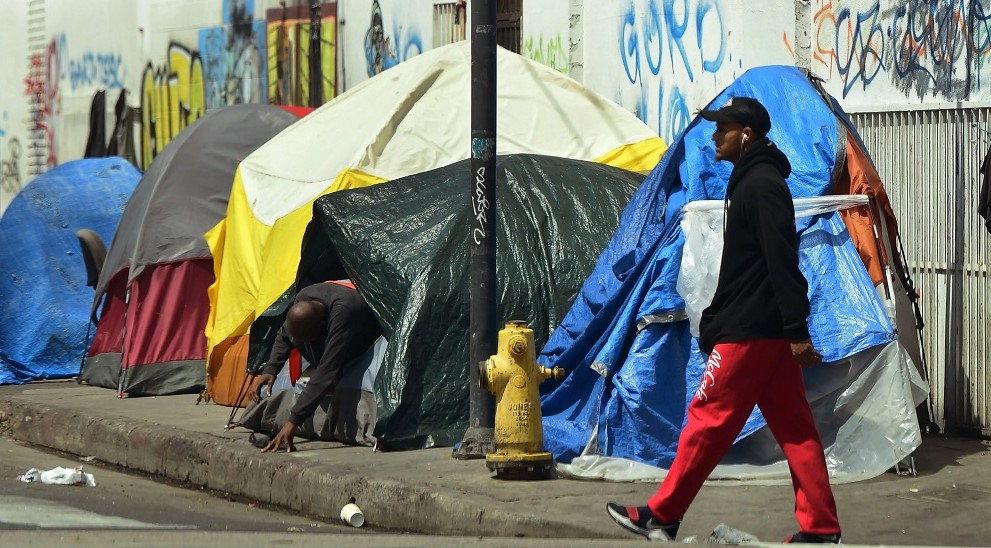Mainstream Economists Are Struggling to Hide the Incoming Economic Collapse
Sun 11:23 am +01:00, 5 Dec 2021For many years now there has been a contingent of alternative economists working diligently within the liberty movement to combat disinformation being spread by the mainstream media regarding America’s true economic condition. Our efforts have focused primarily on the continued devaluation of the dollar and the forced dependence on globalism that has outsourced and eliminated most U.S. manufacturing and production of raw materials.
The problems of devaluation and stagflation have been present since 1913 when the Federal Reserve was officially formed and given power, but the true impetus for a currency collapse and the destruction of American buying power began in 2007-2008 when the Financial Crisis was used as an excuse to allow the Fed to create trillions upon trillions in stimulus dollars for well over a decade.
The mainstream media’s claim has always been that the Fed “saved” the U.S. from imminent collapse and that the central bankers are “heroes.” After all, stock markets have mostly skyrocketed since quantitative easing (QE) was introduced during the credit crash, and stock markets are a measure of economic health, right?
The devil’s bargain
Reality isn’t a mainstream media story. The U.S. economy isn’t the stock market.
All the Federal Reserve really accomplished was to forge a devil’s bargain: Trading one manageable deflationary crisis for at least one (possibly more) highly unmanageable inflationary crises down the road. Central banks kicked the can on the collapse, making it far worse in the process.
The U.S. economy in particular is extremely vulnerable now. Money created from thin air by the Fed was used to support failing banks and corporations, not just here in America but also banks and companies around the world.
Because the dollar has been the world reserve currency for the better part of the past century, the Fed has been able to print cash with wild abandon and mostly avoid inflationary consequences. This was especially true in the decade after the derivatives crunch of 2008.
Why? The dollar’s global reserve status means dollars are likely to be held overseas in foreign banks and corporate coffers to be used in global trade. However, there is no such thing as a party that goes on forever. Eventually the punch runs out and the lights shut off. If the dollar is devalued too much, whether by endless printing of new money or by relentless inflationary pressures at home, all those overseas dollars will come flooding back into the U.S. The result is an inflationary avalanche, a massive injection of liquidity exactly when it will cause the most trouble.
We are now close to this point of no return.
The difference between a crisis and a real crisis
As I have said for some time, when inflation becomes visible to the public and their pocketbooks take a hit, this is when the real crisis begins.
A Catch-22 situation arises and the Fed must make a choice:
- To continue with inflationary programs and risk taking the blame for extreme price increases
- Taper these programs and risk an implosion of stock markets which have long been artificially inflated by stimulus
Without Fed support, stock markets will die. We had a taste of this the last time the Fed flirted with tapering in 2018.
My position has always been that the Federal Reserve is not a banking institution on a mission to protect American financial interests. Rather, I believe the Fed is an ideological suicide bomber waiting to blow itself up and deliberately derail or destroy the American economy at the right moment. My position has also long been that the bankers would need a cover event to hide their calculated economic attack, otherwise they would take full blame for the resulting disaster.
The Covid pandemic, subsequent lockdowns and supply chain snarls have now provided that cover event.
Two years after the pandemic started and the Fed has pumped out approximately $6 trillion more in stimulus (officially) and helicopter money through PPP loans and Covid checks. On top of that, Biden is ready to drop another $1 trillion in the span of the next couple years through his recently passed infrastructure bill. In my article ‘Infrastructure Bills Do Not Lead To Recovery, Only Increased Federal Control‘, published in April, I noted that:
“Production of fiat money is not the same as real production within the economy… Trillions of dollars in public works programs might create more jobs, but it will also inflate prices as the dollar goes into decline. So, unless wages are adjusted constantly according to price increases, people will have jobs, but still won’t be able to afford a comfortable standard of living. This leads to stagflation, in which prices continue to rise while wages and consumption stagnate.
Another Catch-22 to consider is that if inflation becomes rampant, the Federal Reserve may be compelled (or claim they are compelled) to raise interest rates significantly in a short span of time. This means an immediate slowdown in the flow of overnight loans to major banks, an immediate slowdown in loans to large and small businesses, an immediate crash in credit options for consumers, and an overall crash in consumer spending. You might recognize this as the recipe that created the 1981-1982 recession, the third-worst in the 20th century.
In other words, the choice is stagflation, or deflationary depression.”
https://www.activistpost.com/2021/12/mainstream-economists-are-struggling-to-hide-the-incoming-economic-collapse.html











